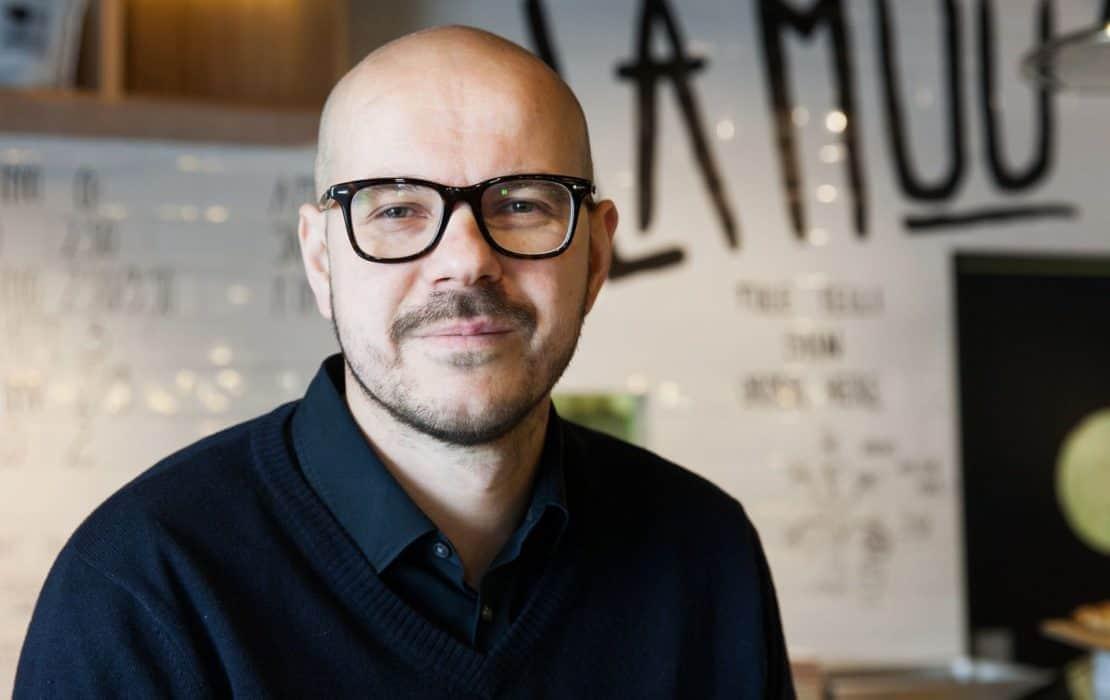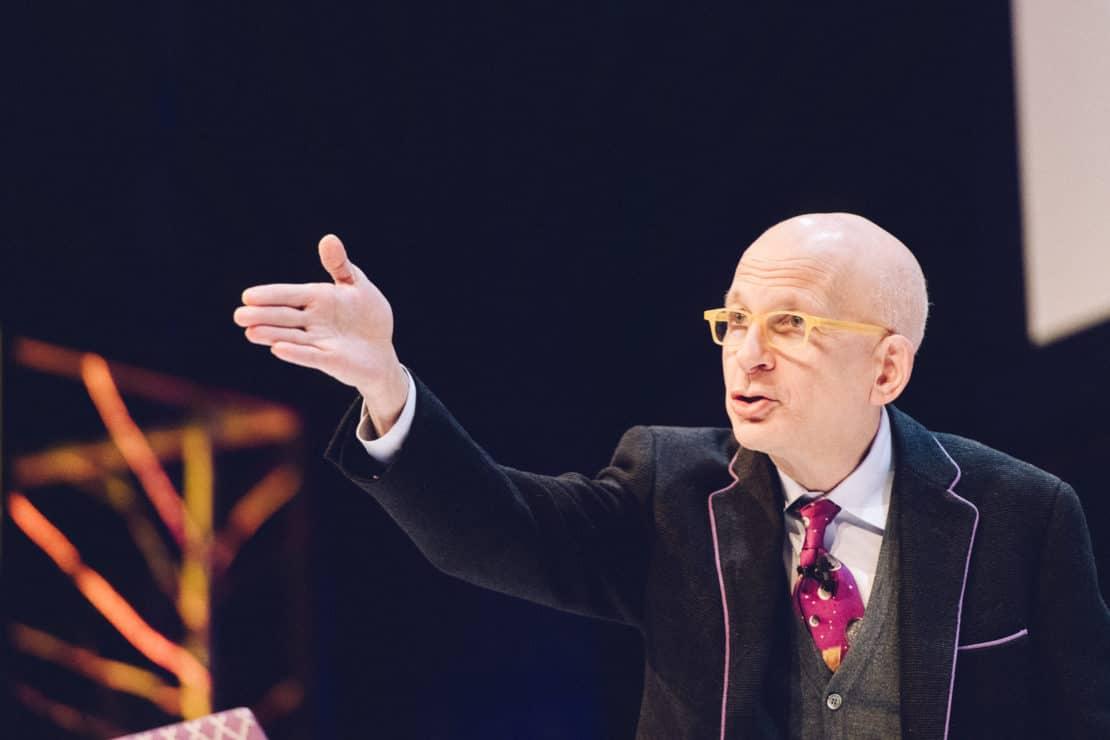11Apr2018
First, there was a promising banking career, then a hugely successful organic ice cream business, and, most recently, a unique school in the Estonian capital of Tallinn. “Each morning, the pupils gather in a circle in which they openly speak out, immersing in self-analysis and metacognition,” says Rasmus Rask, an Estonian businessman and the founder of the hip ice cream line La Muu and a multilingual school. In his role as a socialpreneur, Rask co-founded an educational anti-bullying foundation, which helped reduce bullying by 17 percent in the schools that implemented the pilot program. Yet, the ultimate desire of one of Nordic Business Report’s Top 20 Responsible Leaders in Northern Europe is expanding La Muu into neighboring markets.
Nordic Business Report: If you were to rewind your life, what would be the most vivid memories of your childhood?
Rasmus Rusk: I’m 40 now, so, understandably, I spent part of my life in the Soviet era. Although the system had its shortcomings and the shelves of the local shops were always empty, I felt very safe spending much time with my grandparents in their summer house. As a father now myself, I do my best to ensure the security of my own children.
NBR: During the Soviet period, many boys cherished dreams of becoming cosmonauts or policemen (the precise equivalent of them were militiamen) due to the “Soviets are best” propaganda messages. What were your dreams as a child?
RR: As far as I remember, I wanted to become a competitive athlete. Being a promising sportsman back then provided possibilities of getting to the other side of the Iron Curtain. So. in the third grade, I enrolled at a local sport school to play basketball. I dribbled the ball quite successfully until I graduated high school in Tallinn.
NBR: Who do you believe has made the biggest impact on your life?
RR: I believe it was my father, although I had quite a rocky relationship with him in my teens. My father was a fairly high-profile politician, a lawyer by profession who served as Minister of Justice and, later on, as the Chief Justice of the Supreme Court of the Republic of Estonia, so we didn’t see him much at home due to his huge workload. He took his work very seriously and I believe he passed this trait, along with a quest for the truth, on to me.
NBR: Looking through your life, I help but think that there has been a lot of spontaneity in it. I mean, you’ve experimented with many different jobs. First, you were a successful banker, then you started an ice cream business, which took off right away, and your latest business endeavor is a unique school in Tallinn. Tell me a little bit about all this.
RR: Well, the word “spontaneity” wouldn’t be the first one I’d like to use. I prefer to call it a “journey”. Being a lawyer by profession, I started in that capacity in a Tallinn branch of Swedbank before moving on to the marketing department via HR. Having spent over 10 years at the bank, I felt an urgency to shuffle my life a little bit and to try something else. I realized there were many viable new business models outside it, so, in 2012, my business partner and I started an eco-friendly ice cream business. I’m glad it’s all played out amazingly well for me along the way.
NBR: What makes La Muu so unique?
RR: The ice cream is handmade from start to finish. For example, we peel the rhubarb ourselves and squeeze in some lemon juice. We learned how to use the gelato machine in Italy. La Muu ice cream is 100 percent natural and we use as many local ingredients as possible.
NBR: I assume people don’t buy an ice cream just because it is organic. It has to taste good too.
RR: Of course!
NBR: What does La Muu mean, by the way?
RR: It means the sound of a mooing cow, which is understandable in the Baltics and beyond. By choosing the name I hoped that it would significantly improve our marketing profile and expansion to neighboring countries, which I’m currently in the process of planning.
NBR: Starting the business must have been risky. Here in the Baltics, we don’t have the same ice cream culture like the Italians do with their gelato. Going organic must have meant higher ice cream prices. With many people here strapped for cash, how did you maneuver the challenges as a new business?
RR: True! I first saw my business as a niche, mum-and-dad business. Jokingly, we called it a “Mickey Mouse pocket business” in the beginning. There are hundreds of tiny brands nowadays, and most of them operate as what I call “hobby businesses”. We were facing ending up being among them, i.e. selling organic ice cream at fairs, special events and in a tiny vendor stall in a Tallinn market at best. But we were wrong and lucky. The timing of its kickstart during 2012 and 2013 coincided with a rapid growth in the Estonian economy and, consequently, a rising purchasing power as well as a growing demand for quality goods. By then, myself and many others had come to an understanding that the future belongs to organic foods, including organic ice cream.
Engaging the owner and the management and the customers is another thing we do on daily basis. I can stand behind the counter and serve the scoops myself, this is no problem for me. Sustainability is on my business priority list, however. In fact, my business partner and I wouldn’t have started it if there’d been gourmet organic ice cream already available in Estonia. By organic I mean that we wanted all the ingredients – the cream, sugar, flavors etc. – to be 100 percent ecological and organic, i.e. produced without the use of chemical fertilizers, pesticides, or other artificial chemicals. There were certain organic producers of milk and berries, but not of organic ice cream in Estonia.
NBR: And what a fascinating accomplishment it has been. Now, you’re running over 120 ice cream parlors throughout Estonia. You’ve also branded yourself as an ice cream maker that caters to the individual needs of the client. How did you manage all that?
RR: Indeed, that’s right. One of our specialist clients is the annual Tallinn Music Week Festival. The organizers ask the participants beforehand what kind of ice cream flavor they’d like to have during the festival. I joke that, similarly to crowdfunding, we invented a crowd-sourced selection of ice cream flavors. Practically it works in the following way: The would-be festival goers vote online to pick their favorite flavor. Using this method, we’ve introduced three new flavors into the market, and one of them, sesame caramel, hit the jackpot right away.
NBR: When will La Muu cross the Estonian border?
RR: We’re planning it! It’s not easy, however, as there are more organic ice cream brands. I’d rather gain a strong footing in the domestic market first before entering the others.
NBR: Instead of taking your prospering ice cream business to the next level, you simultaneously opened a three-language private school in Tallinn. Did you really need it?
RR: Well, I’m a father of two children, my eight-year-old daughter Natali and my son Hugo who’s 10. When we were considering the idea of a private three-language (Estonian, Russian, and English) school in Kalamaja, Tallinn, they were about to start school. My wife and I wanted to have them and other children enrolled in a different type of school, a multilingual one, innovative and free of bullying. On paper, it’s a private school, but I’d rather call it a community school run by a foundation.
NBR: Some patriotic Estonians perhaps might not like it due to the fact that Russian is one of the school’s teaching languages. Why did you choose the three-language school model?
RR: We did it for two reasons. After looking through a slew of language teaching methodologies, we came to the conclusion that results of learning a language are best when the pupil is immersed in a multilingual environment as much as possible. Considering there’s a relatively large Russian-speaking community in Estonia and Tallinn (the Russian-speaking population in the capital comprises some 30 percent in total) too, understandably, we could hardly exclude it. We’ve gone further as a matter of fact (in teaching the languages). We teach not only them, but the students use them in learning other subjects, be it mathematics, history, or geography. So, our school mirrors Estonian society and the innovative international trends of language learning. When it comes to enrollment, the division between Russian and Estonian pupils is half and half.
NBR: Won’t your ice cream business suffer with your time split between the parlor and the school?
RR: There’s a risk of this if my time is not used properly, I can’t deny it. However, about a half year ago, I realized that La Muu had reached a stage where it needed a full dedication. Having taken off, now it needs more efforts towards product marketing, export, and its continued success within the local market. So, my primary focus now is on that. As for the school, I intend to keep a position on the supervisory board only. Also, my involvement will also be as Natali’s father.
NBR: Last question. The Estonian press has written about how you have sold your car to promote sustainability on a personal level. An outlandish move for a businessman, even in digital Tallinn! How does it feel?
RR: Indeed, I sold my car and drive my bike whenever I can. Frankly, I don’t miss my car at all. Riding by bus or tram saves time, believe me. On the whole, I consider myself a very lucky guy. I’ve got so much in my life, including my family, my businesses and, importantly, my inner peace. If the efforts to expand La Muu business beyond Estonia are successful, I’ll be the most successful businessman around! And it will, as I’m convinced that, sooner or later, organic products will become mainstream goods. I’m on the way to breaking new ground and making it happen.


